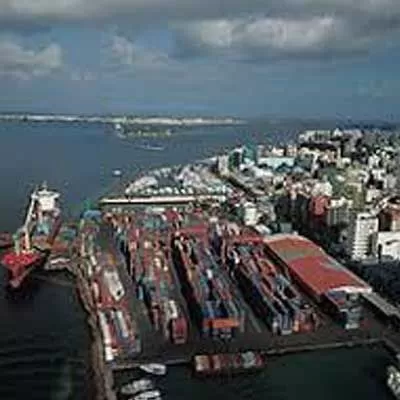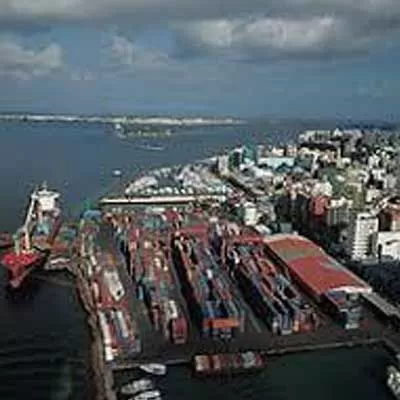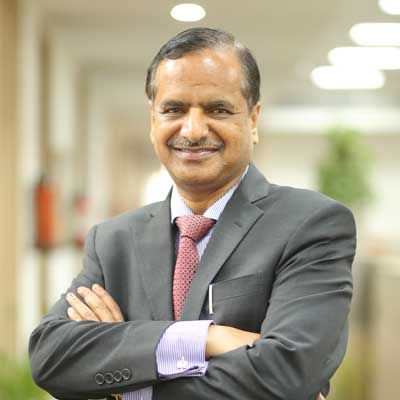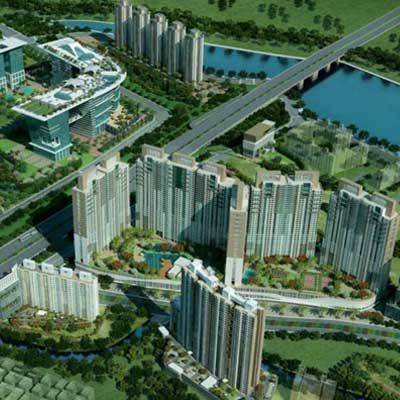- Home
- Real Estate
- Benchmarking Sustainability!

Benchmarking Sustainability!
Chakan, a town in Pune, is home to a special economic zoneá(SEZ) promoted by theáMaharashtra Industrial Development Corporation (MIDC). Here, you will find the stylish and eco-friendly Marriott Courtyard Hotel, which recently received a Gold rating by the India Green Building Council (IGBC) for successfully achieving green building standards under LEED.
Right from the initial planning of the project, the Marriott Courtyard Hotel set a target of achieving the LEED India Gold Rating. Thereon, measures were taken to balance the luxury required for a five-star hotel vis-a-vis the standards prescribed by LEED. Juzer S Kothari, Managing Director, Conserve Consultants Pvt Ltd, shares the measures undertaken to achieve this.
Efficiency defined: The site area of the project is 1.43 lakh sq ft with a built-up area of 1.92 lakh sq ft; the height is 134.51 ft. Amenities in the Marriott Courtyard Hotel include a restaurant, fitness centre, swimming pool and sports complex, among others. The landscape was designed with minimum turf area and more drought-tolerant species for less landscape water consumption. Temporary vegetation (seeding) was done to stabilise the soil. To achieve long-term sustainability throughout the life-cycle of the project, energy and water were identified as key areas to be worked on during the design stage. Multiple strategies such as passive architectural design, energy-efficient envelope material especially the glazing, low-lighting power densities in all areas (indoor and outdoor), high-efficiency air-conditioning system, heat pumps for hot water generation, were planned. The team at Conserve decided to benchmark the energy consumption pattern to be 10.38 per cent lower than ASHRAE baseline standards. For water conservation, a meticulous thought process was applied for the selection of water fixtures. Other measures implemented during design and construction include less polluting construction techniques, sourcing of recycled materials, indoor air quality requirements by selecting suitable air filters, paints and furniture, proper measurement and verification system, and so on. There is no payback period as the cost to construct the project was achieved within the budget.
Smart materials: The Marriott Courtyard Hotel makes use of materials with recycled content, such that the sum of post-consumer recycled content plus half of the post-industrial recycled content constitutes at least 15.88 per cent of the total value of materials in the project. The advantage is reduced transportation pollution through local sourcing, which in turn helps improve the local economy. Besides, the focus on recycled material reduces the burden on a virgin material, thereby contributing to preserve nature in its pristine form. The project has made use of low-VOC paints for application on the furniture, doors, etc, to ensure better indoor air quality. The paints were kept off the site before installation to reduce the adverse effect of chemical sand. Of the total value of materials used, 43.63 per cent is extracted, harvested or recovered, and manufactured within 400 km of the project site.
Lighting and ventilation: An initial design study was undertaken to analyse and improve the building´s daylight and shading. The site was totally barricaded and water sprinkling was ensured to control air pollution. A sun path analysis was carried out at the initial design stage to analyse the self-shading and orientation of the project and reduce the cooling load. The design of the building was streamlined to ensure maximum fresh air ventilation for better productivity. Permanent monitoring systems have been installed and configured to generate an alarm when the airflow values or CO2 levels vary by 10 per cent or more from the design values in certain fluctuating traffic zones.
Efficiently saving energy: The project has achieved 10.38 per cent energy cost reduction by implementing ECMs over the ASHRAE standard. Some measures include:
Insulated roof with heat reflective tile, efficient double glazing, efficient lighting design, energy-efficient water cooled screw chillers, heat pump for hot water. In over 90 per cent of the regularly occupied spaces, building occupants have direct lines of sight to perimeter glazing. This has reduced dependence on artificial light. An energy simulation for energy requirements and indoor air quality was undertaken to achieve energy savings as well as occupant comfort.
The hotel has implemented high-efficient HVAC equipment with higher COP to meet the standards and achieve energy cost savings.
Treating water: The project has developed and implemented a construction waste management plan to divert 97 per cent of quantities of construction and demolition waste from being sent to the land fill. A sedimentation basin has been constructed to divert all the wastewater and rainwater; hence, the water let out to the municipality drain has no soil sediments. Further, the use of potable water has been reduced by 35 per cent through the use of efficient flow-and-flush fixtures. Also, no potable water is being used for irrigation, which makes use of 100 per cent on-site treated recycled wastewater. Additionally, 100 per cent of wastewater is treated to tertiary standards on site and the treated water is provided for 100 per cent cooling tower makeup and flushing requirements.
Eco-friendly Measures: A sustainable architectural design analysis was undertaken, encompassing all the intricacies of the project.
The performance analysis and gap were estimated to chart out the implementation activities of the design features. Besides, the hotel staff of the project has been trained and educated about green building measures and the procedure, in order to reduce operational energy and water consumption. A post-occupancy commissioning is planned to analyse and bridge the operational gap to achieve and meet the design standards.
Making it there: Considering this is a luxury hotel, indoor air quality was a big challenge while using paints and adhesives. Besides, considering the climate factor, daylight-shading while designing the project was another challenge encountered. Also, analysing and reducing energy consumption and minimising operating cost were hurdles. And reducing potable water consumption and treatment to tertiary standards was a difficult task to achieve. Overcoming all these challenges, the Marriott Courtyard Hotel undertook various efficient measures and made it large by achieving a Gold rating by the IGBC, not only by successfully achieving the green building standards under LEED but with a commendable 35 per cent savings over the LEED India baseline figures.
Project details
Year of completion: 2013
Year of certification: 2015
Contractor: Dohadwala Consultants.
E-mail: fssadikot@yahoo.co.in
Architect/Planner: Somaya & Kakar
Architects. Tel: 022-6573 6085.
LEED consultant: Conserve Consultants.
Tel: 044-2445 0655.
E-mail: info@conserveconsultants.com
Website: www.conserveconsultants.com
Structural consultant: Sterling Engineering Consultancy Services.
Tel: 022-2207 3578. E-mail: sterlingfort@gmail.com
Web: www.sterlingengg.com
Elevators and escalators: Mitsubishi Elevator.
Tel: 044-2847 7373.
E-mail: info@mitsubishielevator.in
Website: www.mitsubishielevator.in
HVAC consultant: Eskayem Consultants.
Tel: 022-2528 2645.
E-mail: eskayem@vsnl.com
Website: www.eskayem.com
Air-conditioners and HVAC contractor: Bluestar.
Tel: 022-6665 4000.
Website: www.bluestarindia.com
Roofing and glazing: Shreeji Fatade.
Tel: 022-2850 3191.
E-mail: info@sfsgroup.co.in
Website: www.sfsgroup.co.in
Saint Gobain. Tel: 022-4021 2121.
Website: www.saint-gobain.co.in
- SEZ
- MIDC
- Marriott Courtyard Hotel
- IGBC
- LEED
- Juzer S Kothari
- Conserve Consultants Pvt Ltd
- ASHRAE
- Construction
- Air filters
- Paints
- Furniture
- Proper Measurement
- Verification system
- ECM
- HVAC equipment
- Wastewater
- Rainwate
- Dohadwala Consultants
- Somaya & Kakar
- Sterling Engineering Consultancy Services
- Mitsubishi Elevator
- Bluestar
- Shreeji Fatade
- HVAC
The five-star Marriott Courtyard Hotel in Chakan, Pune, has recently achieved a remarkable savings of 35 per cent over the LEED India baseline figures. Chakan, a town in Pune, is home to a special economic zoneá(SEZ) promoted by theáMaharashtra Industrial Development Corporation (MIDC). Here, you will find the stylish and eco-friendly Marriott Courtyard Hotel, which recently received a Gold rating by the India Green Building Council (IGBC) for successfully achieving green building standards under LEED. Right from the initial planning of the project, the Marriott Courtyard Hotel set a target of achieving the LEED India Gold Rating. Thereon, measures were taken to balance the luxury required for a five-star hotel vis-a-vis the standards prescribed by LEED. Juzer S Kothari, Managing Director, Conserve Consultants Pvt Ltd, shares the measures undertaken to achieve this. Efficiency defined: The site area of the project is 1.43 lakh sq ft with a built-up area of 1.92 lakh sq ft; the height is 134.51 ft. Amenities in the Marriott Courtyard Hotel include a restaurant, fitness centre, swimming pool and sports complex, among others. The landscape was designed with minimum turf area and more drought-tolerant species for less landscape water consumption. Temporary vegetation (seeding) was done to stabilise the soil. To achieve long-term sustainability throughout the life-cycle of the project, energy and water were identified as key areas to be worked on during the design stage. Multiple strategies such as passive architectural design, energy-efficient envelope material especially the glazing, low-lighting power densities in all areas (indoor and outdoor), high-efficiency air-conditioning system, heat pumps for hot water generation, were planned. The team at Conserve decided to benchmark the energy consumption pattern to be 10.38 per cent lower than ASHRAE baseline standards. For water conservation, a meticulous thought process was applied for the selection of water fixtures. Other measures implemented during design and construction include less polluting construction techniques, sourcing of recycled materials, indoor air quality requirements by selecting suitable air filters, paints and furniture, proper measurement and verification system, and so on. There is no payback period as the cost to construct the project was achieved within the budget. Smart materials: The Marriott Courtyard Hotel makes use of materials with recycled content, such that the sum of post-consumer recycled content plus half of the post-industrial recycled content constitutes at least 15.88 per cent of the total value of materials in the project. The advantage is reduced transportation pollution through local sourcing, which in turn helps improve the local economy. Besides, the focus on recycled material reduces the burden on a virgin material, thereby contributing to preserve nature in its pristine form. The project has made use of low-VOC paints for application on the furniture, doors, etc, to ensure better indoor air quality. The paints were kept off the site before installation to reduce the adverse effect of chemical sand. Of the total value of materials used, 43.63 per cent is extracted, harvested or recovered, and manufactured within 400 km of the project site. Lighting and ventilation: An initial design study was undertaken to analyse and improve the building´s daylight and shading. The site was totally barricaded and water sprinkling was ensured to control air pollution. A sun path analysis was carried out at the initial design stage to analyse the self-shading and orientation of the project and reduce the cooling load. The design of the building was streamlined to ensure maximum fresh air ventilation for better productivity. Permanent monitoring systems have been installed and configured to generate an alarm when the airflow values or CO2 levels vary by 10 per cent or more from the design values in certain fluctuating traffic zones. Efficiently saving energy: The project has achieved 10.38 per cent energy cost reduction by implementing ECMs over the ASHRAE standard. Some measures include: Insulated roof with heat reflective tile, efficient double glazing, efficient lighting design, energy-efficient water cooled screw chillers, heat pump for hot water. In over 90 per cent of the regularly occupied spaces, building occupants have direct lines of sight to perimeter glazing. This has reduced dependence on artificial light. An energy simulation for energy requirements and indoor air quality was undertaken to achieve energy savings as well as occupant comfort. The hotel has implemented high-efficient HVAC equipment with higher COP to meet the standards and achieve energy cost savings. Treating water: The project has developed and implemented a construction waste management plan to divert 97 per cent of quantities of construction and demolition waste from being sent to the land fill. A sedimentation basin has been constructed to divert all the wastewater and rainwater; hence, the water let out to the municipality drain has no soil sediments. Further, the use of potable water has been reduced by 35 per cent through the use of efficient flow-and-flush fixtures. Also, no potable water is being used for irrigation, which makes use of 100 per cent on-site treated recycled wastewater. Additionally, 100 per cent of wastewater is treated to tertiary standards on site and the treated water is provided for 100 per cent cooling tower makeup and flushing requirements. Eco-friendly Measures: A sustainable architectural design analysis was undertaken, encompassing all the intricacies of the project. The performance analysis and gap were estimated to chart out the implementation activities of the design features. Besides, the hotel staff of the project has been trained and educated about green building measures and the procedure, in order to reduce operational energy and water consumption. A post-occupancy commissioning is planned to analyse and bridge the operational gap to achieve and meet the design standards. Making it there: Considering this is a luxury hotel, indoor air quality was a big challenge while using paints and adhesives. Besides, considering the climate factor, daylight-shading while designing the project was another challenge encountered. Also, analysing and reducing energy consumption and minimising operating cost were hurdles. And reducing potable water consumption and treatment to tertiary standards was a difficult task to achieve. Overcoming all these challenges, the Marriott Courtyard Hotel undertook various efficient measures and made it large by achieving a Gold rating by the IGBC, not only by successfully achieving the green building standards under LEED but with a commendable 35 per cent savings over the LEED India baseline figures. Project details Year of completion: 2013 Year of certification: 2015 Contractor: Dohadwala Consultants. E-mail: fssadikot@yahoo.co.in Architect/Planner: Somaya & Kakar Architects. Tel: 022-6573 6085. LEED consultant: Conserve Consultants. Tel: 044-2445 0655. E-mail: info@conserveconsultants.com Website: www.conserveconsultants.com Structural consultant: Sterling Engineering Consultancy Services. Tel: 022-2207 3578. E-mail: sterlingfort@gmail.com Web: www.sterlingengg.com Elevators and escalators: Mitsubishi Elevator. Tel: 044-2847 7373. E-mail: info@mitsubishielevator.in Website: www.mitsubishielevator.in HVAC consultant: Eskayem Consultants. Tel: 022-2528 2645. E-mail: eskayem@vsnl.com Website: www.eskayem.com Air-conditioners and HVAC contractor: Bluestar. Tel: 022-6665 4000. Website: www.bluestarindia.com Roofing and glazing: Shreeji Fatade. Tel: 022-2850 3191. E-mail: info@sfsgroup.co.in Website: www.sfsgroup.co.in Saint Gobain. Tel: 022-4021 2121. Website: www.saint-gobain.co.in
























